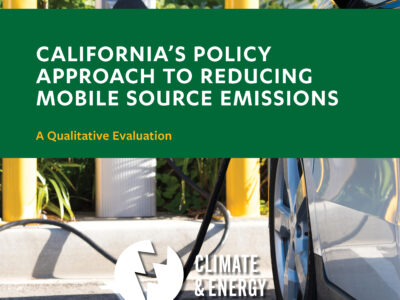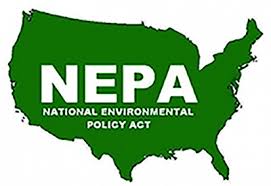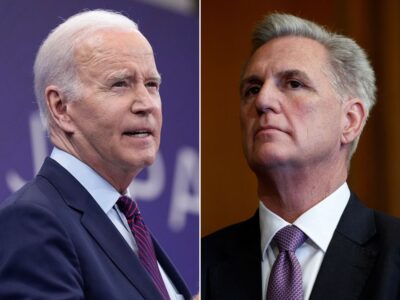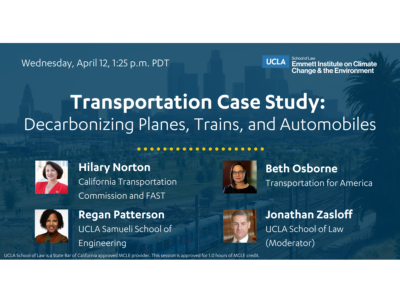Transportation
How Much Credit Can California Take for the Electric Vehicle Revolution?
New CLEE report responds to criticism over how the state quantifies policy impacts.
The California Air Resources Board (CARB) is the state’s lead agency on zero-emission vehicle policy, from its first-in-the-nation mandate on automakers to produce zero-emission models to its wide-ranging incentive programs, among other policy approaches. But in 2021, the California State Auditor released a report criticizing how CARB measures the effects of its zero-emission vehicle policies. …
Continue reading “How Much Credit Can California Take for the Electric Vehicle Revolution?”
CONTINUE READINGMapping City Priorities for an Equitable EV Infrastructure Rollout
How can cities identify high-priority, high-feasibility, high-utility sites?
As state regulators and auto manufacturers begin the drive toward 100 percent zero-emission vehicle sales by 2035, leaders across California face a daunting challenge. How can they ensure that all Californians–not just those who can afford a new EV and a charger in their garage–have access to affordable, reliable, and convenient vehicle charging that meets …
Continue reading “Mapping City Priorities for an Equitable EV Infrastructure Rollout”
CONTINUE READINGFunding Public Transit Is Crucial for California’s Climate Goals
Transit networks need more–not less–support for state to reach 2045 carbon neutrality
It has been widely reported in recent weeks that California’s public transit systems are seeking billions of dollars in support from the state budget to avoid the fiscal cliff they are facing due to slow ridership recovery following the pandemic and shifts in work commute patterns. Without this support, the agencies will need to begin …
Continue reading “Funding Public Transit Is Crucial for California’s Climate Goals”
CONTINUE READINGAccelerating Freight Decarbonization
A Guide to Zero-Emission Zones in Cities
The Transport Decarbonisation Alliance (TDA) is a collaboration among countries, cities, regions and companies with the goal of accelerating the global transformation of the transport sector towards a net-zero emission mobility system by 2050. CLEE is actively supporting California Air Resources Board (CARB) with its TDA presidency through research and strategic coordination. Together with various …
Continue reading “Accelerating Freight Decarbonization”
CONTINUE READINGThe New NEPA: A User’s Guide
The Debt Ceiling Law Rewrote NEPA. Here’s a map to the new statute.
The National Environmental Policy Act (NEPA) was passed over fifty years. It created a new tool for environmental protection, the environmental impact statements, It also created the White House Council on Environmental Quality (CEQ), which issued guidelines of implementing NEPA in 1978. Lawyers will need to retool quickly because of recent changes. Here’s a roadmap …
Continue reading “The New NEPA: A User’s Guide”
CONTINUE READINGNEPA and the Debt Deal
Will the permitting sections of the debt ceiling bill undermine environmental reviews?
Prior to the release of the text of the debt ceiling bill Sunday night, press reports had mentioned only a couple of provisions relating to environmental impact statements. It turns out there’s a lot more. The bill would make numerous changes in the statute governing impact statements, the National Environmental Policy Act of 1969 (NEPA). …
Continue reading “NEPA and the Debt Deal”
CONTINUE READINGThe Revenge of the Lawyers
Economists ousted lawyers (and law) from their central role in the regulatory process. That’s changing.
As you’ve probably heard, the Biden Administration has proposed aggressive new targets for greenhouse gas emissions from new vehicles. That’s great news. One really important aspect of the proposal relates to the justification for the proposal rather than the proposal itself. Following a recent trend, the justification is based on the factors specified by Congress …
Continue reading “The Revenge of the Lawyers”
CONTINUE READINGCan the New Climate Laws Transform our Transportation Infrastructure?
The IIJA and IRA will spend a lot of money on transportation—but whether they’ll create fundamental change in our infrastructure or continue business as usual will depend on how that money is used.
This is the last in our series of posts previewing the Emmett Institute’s 2023 Symposium, coming up on April 12. Check out the first post, introducing some of the big questions around the IIJA and IRA, the second post, on transmission infrastructure, and RSVP for the Symposium here! Transportation is one of the most complicated …
Continue reading “Can the New Climate Laws Transform our Transportation Infrastructure?”
CONTINUE READINGAchieving EV Battery Sustainability
CLEE issue brief looks back on 2022 EV battery supply chain milestones and forecasts 2023 decisions
Countries in key markets are accelerating their transportation decarbonization goals, which in turn is driving up demand for electric vehicles (EVs). Here in California, for example, the Air Resources Board approved the Advanced Clean Cars II rule in 2022, which establishes that all new passenger vehicles sold in the state must be zero-emission vehicles by …
Continue reading “Achieving EV Battery Sustainability”
CONTINUE READINGNot Quite a “Windfall Tax”
SBX1-2 passes out of the California Senate… but won’t get Californians their money back.
As Californians endured staggering prices at the gas pump during the summer and fall of 2022—in excess of $2 higher per gallon than the national average—Governor Newsom accused oil companies of “rank price gouging” and vowed to put money back in Californians’ pockets. He announced a special session of the California Legislature to address the …
Continue reading “Not Quite a “Windfall Tax””
CONTINUE READING











